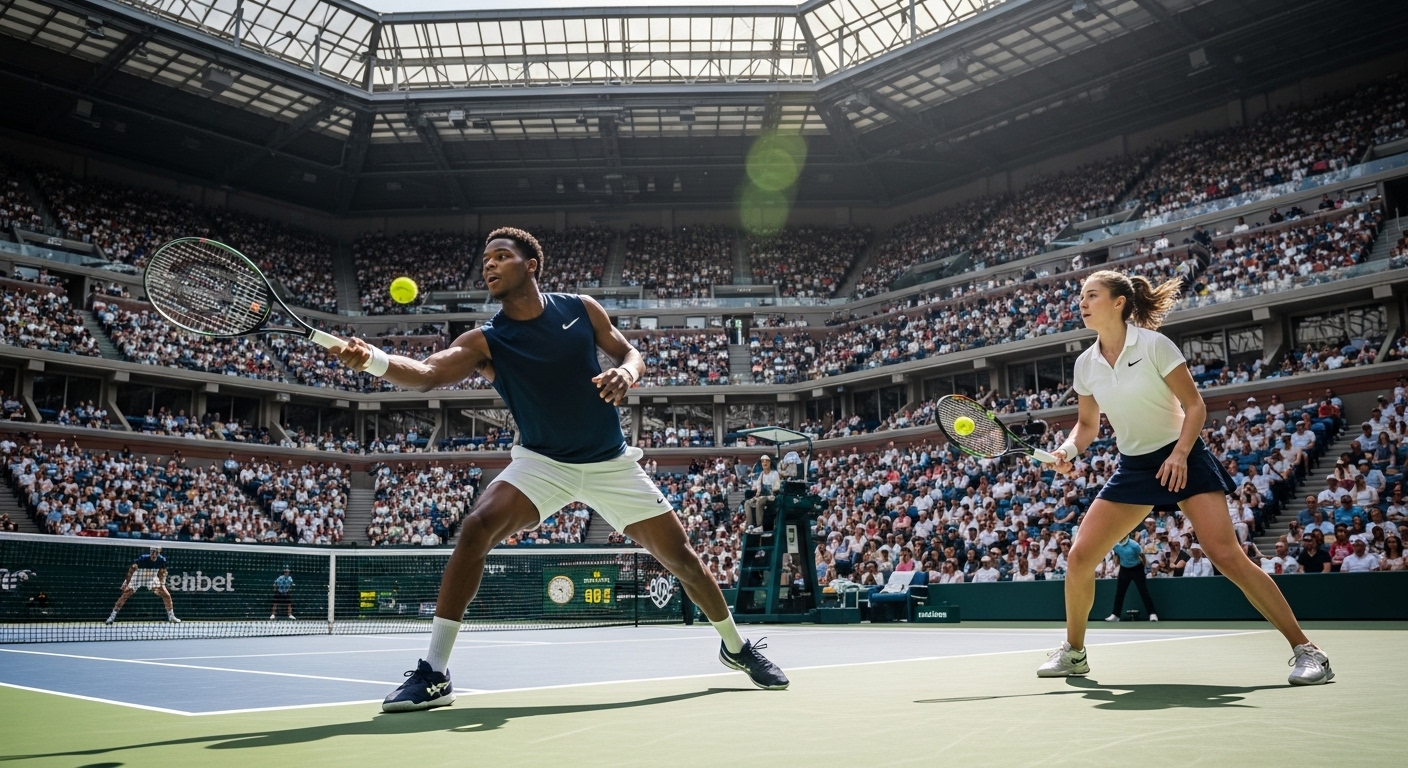On pristine courts around the world, from the hallowed grass of Wimbledon to the red clay of Roland Garros, a captivating duel unfolds: tennis. This sport, a masterful blend of athleticism, mental fortitude, and strategic brilliance, has enchanted audiences for centuries. In Faisalabad, like in many corners of the globe, the graceful yet powerful strokes of tennis players resonate with enthusiasts, drawing them to courts and screens alike.
The Dynamics of the Game: A Symphony of Strokes
At its heart, tennis is a racquet sport played between two players (singles) or two teams of two players (doubles) on a rectangular court divided by a net. The objective is to hit a ball over the net and into the opponent’s court in such a way that they cannot legally return it.
What makes tennis such a compelling spectacle is its intricate scoring system and the sheer variety of play:
- Scoring: Tennis uses a unique “love-15-30-40-game” scoring system. A player needs to win four points to win a game, six games (with a margin of two) to win a set, and a set number of sets (typically two or three) to win a match. The concept of “deuce” and “advantage” adds layers of tension to close games.
- Serves and Returns: The serve is a crucial weapon, initiating each point with power and spin. The ability to return serves effectively is equally vital, setting the tone for the rally.
- Groundstrokes: Forehands and backhands, executed with various spins (topspin, slice) and power, are the backbone of rallies from the baseline.
- Volleys and Smashes: Aggressive shots hit before the ball bounces, typically played closer to the net, often decisive in ending points quickly.
- Strategic Play: Players constantly adjust their tactics – targeting weaknesses, exploiting open court, varying pace and spin, and deciding when to attack or defend.
A Journey Through Time: From Monasteries to Grand Slams
The origins of tennis are shrouded in some mystery, with theories tracing it back to ancient Egypt or 12th-century France, where monks played “jeu de paume” (game of the palm) using their hands. Over centuries, gloves, then rudimentary racquets, evolved. The “real tennis” or “royal tennis” played in enclosed courts was popular among European royalty, with King Henry VIII of England being a notable enthusiast.
The modern game, known as “lawn tennis,” emerged in 19th-century England, refined and popularized by figures like Major Walter Clopton Wingfield. Its spread was rapid, leading to the formation of governing bodies and, crucially, the establishment of the four major tournaments that define the sport today:
- Wimbledon (1877): The oldest and most prestigious, played on grass courts in London, England. Known for its strict “all-white” dress code and royal patronage.
- US Open (1881): Played on hard courts in New York City, USA, it’s known for its electrifying night sessions and bustling atmosphere.
- French Open (Roland Garros) (1891): The premier clay-court tournament, held in Paris, France. Its slow surface and high bounces make it a grueling test of endurance and tactical prowess.
- Australian Open (1905): Played on hard courts in Melbourne, Australia, it kicks off the Grand Slam calendar each year, often in scorching heat.
These four Grand Slams are the pinnacle of individual achievement in tennis, offering the most ranking points, prize money, and prestige.
Tennis Legends and Global Impact
Throughout its history, tennis has produced iconic figures whose rivalries and unparalleled skill captivated generations. From Rod Laver and Billie Jean King to Bjorn Borg, Martina Navratilova, Chris Evert, Pete Sampras, Andre Agassi, Steffi Graf, and, more recently, the “Big Three” of Roger Federer, Rafael Nadal, and Novak Djokovic, alongside Serena Williams and Venus Williams, these athletes have transcended the sport to become global cultural icons.
Tennis is truly a global sport, with a professional tour (ATP for men, WTA for women) that spans continents. It’s played and followed intensely in Europe, North and South America, Australia, and increasingly in Asia. The athleticism required, combined with the mental battle and the dramatic swings of momentum, makes it a compelling watch for fans worldwide.
The Modern Game: Technology, Trends, and Future Horizons (as of Mid-2025)
Tennis in 2025 is a dynamic blend of tradition and innovation:
- Technology on Court: Hawk-Eye Live electronic line-calling systems are now standard at major tournaments, replacing human line judges and ensuring unparalleled accuracy. This has drastically reduced disputes and sped up play. Data analytics tools are revolutionizing coaching, providing players with real-time insights into their performance, strategy, and opponents’ weaknesses.
- New Era of Rivalries: With the “Big Three” either retired (Federer) or in the twilight of their careers (Nadal, Djokovic), a new generation of stars like Carlos Alcaraz, Jannik Sinner, Coco Gauff, and Iga Świątek are forging intense rivalries, characterized by incredible athleticism and creative shot-making.
- Athlete Wellness: A growing emphasis on player well-being includes advanced sports science for injury prevention and recovery, alongside increased focus on mental health support.
- Fan Engagement: Augmented Reality (AR) is enhancing broadcast experiences, showing real-time stats and shot trajectories. Players are leveraging social media to connect with fans directly, offering behind-the-scenes glimpses. Luxury brand collaborations are also a significant trend, turning top players into fashion and lifestyle influencers.
- Sustainability: Tournament organizers and governing bodies are prioritizing eco-friendly practices, from reducing waste to promoting sustainable travel.
- Growth in New Markets: The sport continues to expand its reach beyond traditional strongholds, with increasing interest and investment in regions like Asia and Africa.
Tennis remains a sport of enduring beauty, where individual mastery meets strategic brilliance. As it embraces technological advancements and fosters new generations of incredible talent, the rhythmic back-and-forth of the tennis ball will continue to captivate audiences and inspire athletes for generations to come.

